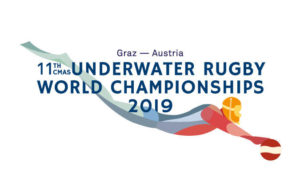We use Google to find any information we need every day. More than 75% of US population visits Google on the web and more than 2.5 billion Android devices are offering portable connection to Google’s services worldwide. But we seldom use Google to find out what others are looking for and what that tells us about underwater rugby. The first time I used Trends to look UWR up was in 2017 and I remember back at that time, we were not even on the map at all. Google did not know of us as a search topic – one had to look underwater rugby as a term up, this way missing a lot of hits in any other languages.
3 years passed, we were amazed by the World Champinships in Graz in the meantime, and this professional event made searches peak. Since then interest in the sport has never bottomed out, despite the pandemic forcing the lockdown of pools.
Analytics of our YT channel show trends of increasing interest too. The past year we’ve doubled the number of views and new subscribers (41703, 68) compared to the previous one (19683, 32).
What’s really exciting is that more and more viewers find us from countries which were UWR has not settled yet. In 2019, we had viewers from 24, mostly UWR-playing countries. The most viewers were from the US (20%) and then all the other countries ranged between 1 and 2%, ranking Hungary the 2nd, then Canada, the UK, Australia, Germany, Sweden, etc. Compared to this, in 2020, we were still the most popular in the US, but only by 12%, and our increased number of views meant Brazil, India, Japan and Indonesia taking over the top of the list, and the total number of countries from where people have watched us from grew to 40.

If I had to guess, this growth is due to more and more people find out what they’ve missed out on. And it’s a wider audience not only in a geographical sense. Earlier, there was a clear male dominance amongst the viewers, around 70-80%, and that levelled to a 2:1 ratio last year. Also, the age distribution got even, we went from a strict 18-32 to a 13-65+.
We are taking baby steps towards creating content that is compelling for outsiders too, but that’s OK. Sometimes I don’t mind that we are hidden from the world, and I can put the cameras aside, jump in to have fun and focus only on the ball.
I have not yet seen a sport more awesome than UWR, and I have this vision, that one day it may be amongst the most popular sports. But I also have to admit that I’ve been playing rugby for a decade, and ours is still the tiniest community at the Hajós National Swimming Complex, while water polo packs hundreds of kids each year, and even our UWH collective is massive compared to us. And that’s not due to the fact that shallow pools can be found everywhere around the countryside. There are at least 3 diving pools at the capital, so in theory we could have more teams and players. I’ve decided to seek for answers in Google Trends. Trends has a function that compares the relative popularity of searches on the provided topics, like water polo, underwater hockey and underwater rugby in each country.
Embedded Trends failed to load, please find it here. I’d recommend you first set the time range to “5 years”, the location to “worldwide”, search on the topic of UWR, then add UWH to compare, and only then, water polo. Allow all regions to be included. This comparison can be done with any sports of course, but this triad is often found competing with each other for athletes and pool time, and of course, public attention.
Check out this chart and see how well the performance in sport and interest in sport align in each country. Don’t forget to turn on all regions!
Does this mean that Croatians will stick to water polo, Argentinians to UWH and Finnish people to UWR? Most likely not. Both underwater games keep gaining traction in new and new countries, however, with different velocity. The question is, how will these sports relate to each other? There are examples from Colombia, Turkey, Serbia or the UK, which show that co-operation yields better results than cut-throat rivalry, regardless the level of the competition.
Personally, I’m going to be a Honvéd-fan forever, I firmly believe their water polo team changed the way we were seen by the public, just by playing with us a bit. Or another similar example, they were the first traditional club to establish an e-sports team and department.



